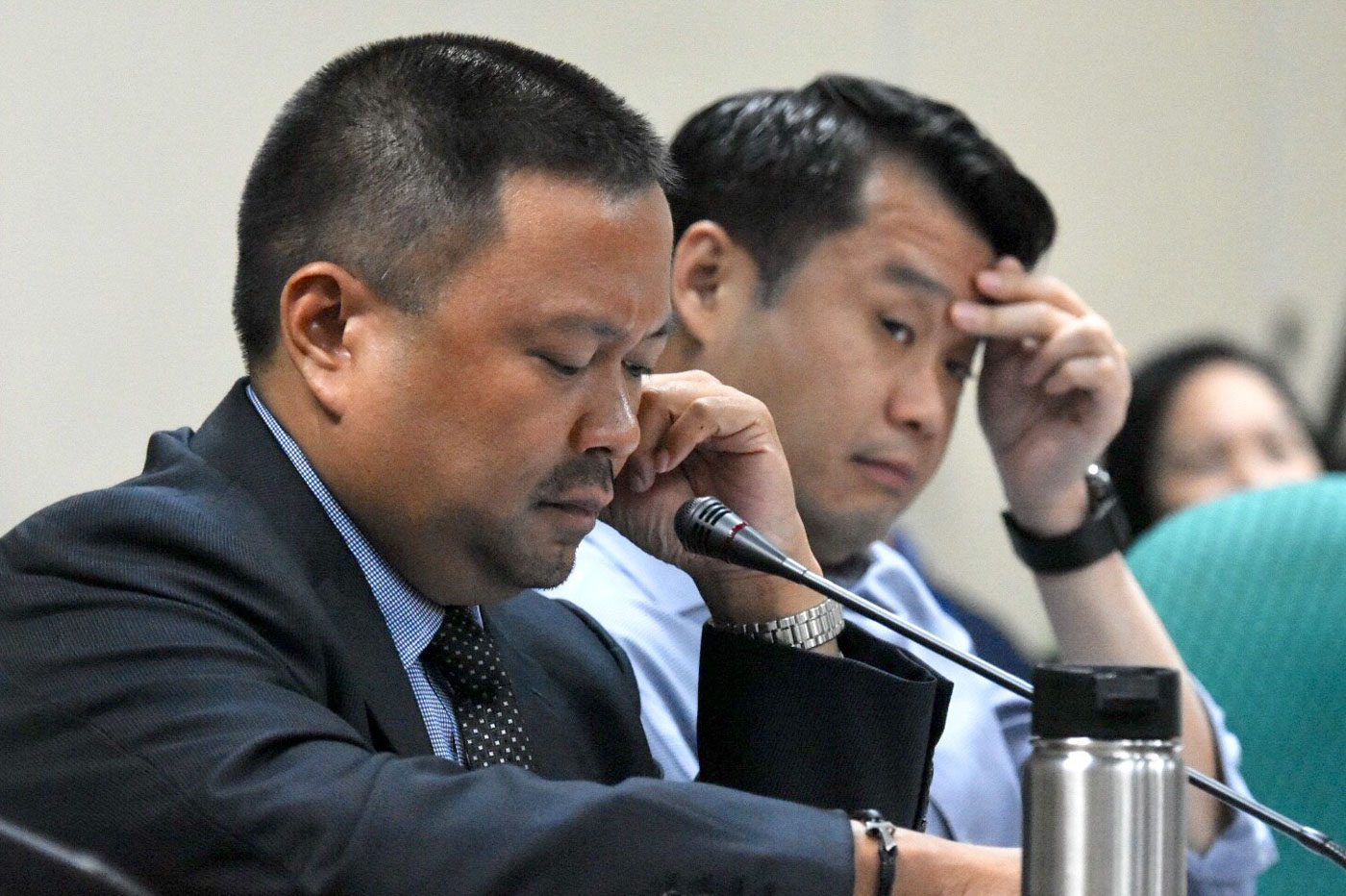SUMMARY
This is AI generated summarization, which may have errors. For context, always refer to the full article.

MANILA, Philippines – Senators linked the P8.1-billion Barangay Health Stations (BHS) project to the controversial P3.5 billion-Dengvaxia program, saying funding for the two programs were both rushed for the 2016 elections.
Senate health committee chairman Joseph Victor Ejercito said this on Wednesday, July 4, as the panel conducted an inquiry into the nationwide BHS project that started under the Aquino administration.
“I would say so kasi December 29, 2015, lumabas ang SARO (Special Allotment Release Order) eh. That’s the last day of 2015, so kasabay din po ito ng Dengvaxia. Actually isang page sila,” Ejercito told reporters after the hearing, when asked for the possible connection of the project with the 2016 polls.
(I would say so because the SARO was released on December 29, 2015. That’s the last day of 2015 so it’s the same time as Dengvaxia. Actually, their SAROs are in the same page.)
But the release of the funding did not mean the immediate completion of the project. The construction was not expected to be finished before then President Benigno Aquino III stepped down on June 30, 2016.
Asked how the previous administration could have benefitted from it given this circumstance, Ejercito couldn’t provide an answer.
“Well, ‘yun ang hindi ko alam. Ayoko na lang makialam. Eh sa ganyan bakit hinabol? Alam naman natin minsan ‘yung infrastructure projects ay maraming milagrong nangyayari diyan. Obviously, it was also done in haste. Medyo mabilis-bilis din ang pagkakabigay. Ang ano doon, magkasabay sila ng Dengvaxia,” he said.
(Well, that I don’t know. I don’t want to interfere. But why did they rush it? We all now that sometimes, infrastructure projects are marred by irregularities. Obviously, it was also done in haste. The funding release was fast. And what [stands out] there is that it was done at the same time as Dengvaxia.)
During the Senate hearing, Health Undersecretary Roger Tong-An told the panel that the SARO for BHS was issued on December 29, 2015, less than 5 months before the 2016 presidential elections and about 6 months before Aquino left office.
Upon Senate President Vicente Sotto III’s questioning, Tong-An said the SARO number for the said project was 150028813.
“Do you also have the SARO number of the Dengvaxia fund?” Sotto asked, referring to the dengue immunization program.
Tong-An replied that the Dengvaxia program’s SARO number was 150028814.
“Ah magkasunod ito (So they were released one after the other)?” Sotto said.
Ejercito then pointed out that the SARO for the two programs was released at the same time on December 29.
“So this was released December 29? As far as I can remember, the same release date of the Dengvaxia kaya po siguro natanong ni Senator Sotto (maybe that’s why Senator Sotto asked about it),” Ejercito said.
Former health secretary Janette Garin denied the project and funding were rushed, saying the government is “continuously funding” the program every year. It just so happened, she said, that they used the savings to fill the huge gap of 3,200 stations in the number of BHS nationwide.
The source of the funding was the Miscellaneous Personnel Benefits Fund (MPBF), the item in the budget allocating funds for unfilled positions in the executive branch of government. MPBF savings could only be realigned until the end of the same fiscal year. (READ: Senators hit ‘dangerous’ gov’t practice of not filling posts for savings)
“Hindi siya hinabol noong December 29. Savings siya mula MPBF na pwedeng i-augment. We used it to fund 3,200 stations out of 22,000 BHS (That was not rushed on December 29. It came from MPBF savings so we could use it for augmentation. We used it to fund 3,200 stations out of 22,000 BHS),” Garin told Rappler in a phone interview.
“Wala nang magreretire, wala ng iba, so we decided to use it for augmentation. Nasa GAA [General Appropriations Act] ‘yan (There were no further retirements, other expenses, so we decided to use it for augmentation. It’s in the GAA),” she added.
During the hearing, Health Secretary Francisco Duque III, his predecessor Paulyn Ubial, and Senators Ejercito and Sherwin Gatchalian slammed the “poor planning” of Garin and her team. While they all agreed that the program’s intention was good, the execution was problematic.
The BHS project, implemented under the Aquino administration, aims to establish 5,700 rural health units to ensure barangays have access to primary health care. Elementary schools were to be identified as sites for the health stations.
Duque said the root cause of all the problems is the “very defective” planning from the start.
Duque pointed out that several health stations were constructed in areas where just a few steps away, school-based and rural health stations were already present. DOH officials and contractor JBros Construction Corporation both agreed there was lack of coordination between the DOH and the Department of Education (DepEd), as some school principals refused to grant spaces for the health stations.
The Commission on Audit said in its report that the project “was obstructed by ineligible and non-workable project sites that were not fully validated before project contracting and implementation due to absence of specific guidelines.”
Garin has requested documents from COA and the Duque-formed task force so she could address matters being raised about the project. – Rappler.com
Add a comment
How does this make you feel?
There are no comments yet. Add your comment to start the conversation.